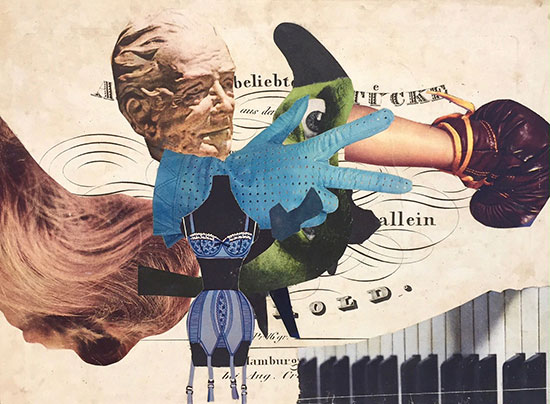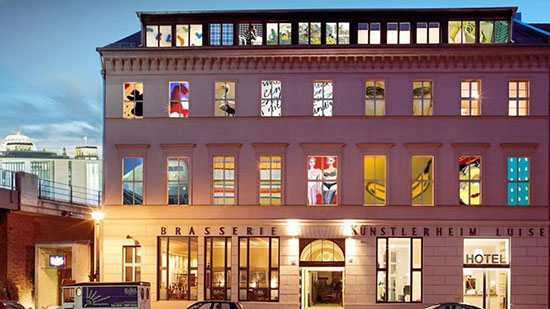Long before WiFi or Pokemon Go, finding urban hot spots was a blood sport among serious seekers of art. From Renaissance Florence and Amsterdam to fin-de-siecle Vienna or Jazz Age Paris, certain cities at certain moments have gathered the greats among painters and sculptors.
In 2016, the word among many curators and artists I know is that Berlin is the place to be right now. Its global arts scene, as celebrated in Berlin Art Week September 13 to 18, 2016, is attracting a migration of connoisseurs and artists, some of whom will end up staying to open studios and find galleries. Each time I go, I am struck by the seriousness not just of the art but of the audience response. Like the scent of the linden trees along the Boulevard Unter den Linden, the deep consideration of challenging art is the special something in the air that distinguishes Berlin from other cities that host the caravansary of contemporary art.
While this is a city that offers countless points of interest for art lovers year-round, for the first-time visitor, nothing beats the introductory value of Berlin Art Week. This tightly coordinated blitz of events includes two major art fairs, the closing phase of the Berlin Biennial, gallery and museum openings, films, performances and special programs at project spaces.
To get the lay of the land, the simultaneous opening night for the two fairs offers the tasting menu from which a list of galleries to be pursued further can be quickly chosen. Of the two, the Positions fair is the upstart, only in its second year. It presents 75 galleries on two floors of an old train station, including many from outside Berlin (Stuttgart, Cologne, Frankfurt, Dusseldorf, Leipzig). The abc Berlin Contemporary Fair is in its ninth year and musters the local heavy hitters from the city’s many art neighborhoods. For instance, a must-see gallery not just at the fair is Galerie Eigen+Art, which has museum-quality solo shows of major figures. Through October, the multi-level gallery presents a sound and painting installation of the work of Rémy Markowitsch.
.

Berlin Art Week kicks off with the simultaneous opening of two major art fairs, including Positions at the Posbahnhof, where mail trains used to unload.
.
The Eigen gallery and its cutting-edge Art/Lab are located in the gritty East German district that is my starting point whenever I hit the ground running. The Prenzlauerberg is a boisterous neighborhood of studios and galleries that mushroomed in the cavernous buildings (many of them abandoned for decades) after the Berlin wall fell in 1989.
.

At the Galerie Eigen, Rémy Markowitsch's installation explores the fighting cricket culture of old Shanghai.
.
After a cup of strong coffee at The Barn, the favorite stop of all the gallery assistants, I head to KW Institute for Contemporary Art, a non-profit studio and gallery space right on the Auguststrasse (the yellow brick road of the gallery district) with its own courtyard restaurant. Up and down its creaking staircases, in and out of the entries, the Biennial crowds were greeted by clever Adrian Piper installations and theatrically curated installations in the galleries that explored (at rather arduous length) the ambiguous prospects of digital innovation.
KW always has three or four shows going on, a good bet no matter what the season. It is not far from the top evening watering hole for art lovers: Clarchens Ballhaus, a rollicking beer garden with a huge ballroom inside where the best after-parties are held, especially when white asparagus is in season.
In addition to the Eigen, the Prenzlauer is home to dozens of other top-tier galleries, and one or two smaller gems. I admire the critical eye that brought the Spanish master Joan Hernández Pijuan to the Galerie Dittmar through October, just the latest of the terrific painting shows I have seen there.
There were no crowds the day I apologetically opened the creaking door into the scholarly silence of the Salon Galerie Die Mowe, run by the arch-expert (but unfailingly kind and welcoming) Claudia Wall. This warm and elegant space is dedicated to Germany’s Lost Generation, those artists of the 1920s avant-garde (many associated with the Bauhaus). My unforgettable encounter was with a small but deeply expressive figure by Ilse Fehling, the lone woman sculptor of the Bauhaus.
.

A polymath who combined art, music, film and poetry, Herbert Behrens-Hangeler is featured at the Salongalerie Die Mowe in the Prenzlauerberg.
.
While in the Prenzlauer, do as the cognoscenti do and spend a quiet hour in the private collection of the Sammlung Hofmann—featuring works by Frank Stella and Albert Oehlin among many others—in a gorgeous apartment on an upper floor of a building tucked into the second courtyard. You will know you are in the right place when you see the Richard Serra sculpture by the elevator bank. Book in advance though: you cannot just ring the bell and tuck your feet into their felt slippers for the tour ([email protected]).
Another stellar private cache is the Feuerle Collection, housed in a wartime telecommunications bunker near the Landwehr Canal in Kreuzberg. It was transformed by the Minimalist architect John Pawson into an underground showcase for a brilliantly curated private museum that juxtaposes 7th century stone Kmer sculptures or Han dynasty furniture with works by Anish Kapoor, Zeng Fanzhi, James Lee Byars and other contemporary artists.
.

Minimalist architect John Pawson transformed a WWII bunker into a private museum for former dealer Desire Feuerle.
.
Berlin is full of substantive artistic ideas of this kind that exploit the provocative parallax that buildings and even parks provide, because the scars of history are still vivid and the artists admirably ensure the past and present are viewed together. The Feuerle is also a reminder of the importance of private patronage, a parallel universe to the huge public treasure houses on the Museum Island (a day’s worth of viewing). Powerhouse Deutsche Bank maintains an immense and always immaculately curated Kunsthalle on the Boulevard Unter den Linden, devoted through October to a survey of contemporary Polish art. It is always worth checking to see what is on view there.
.

Right on the Boulevard Unter den Linden, the palatial exhibition space of Deutsche Banke showcases their artist of the year as well as surveys and themed shows.
.
As in the 1930s—the last time Berlin held this central importance as an art world capital—theater, dance and film play vital roles in the visual arts. The living monument to this tradition is Brecht’s Berliner Ensemble. A perennial highlight of its calendar is a debut or revival of a Robert Wilson stage work. I also recommend a side trip to the Martin-Gropius-Bau, a stately museum originally designed by the Bauhaus master Walter Gropius, where an exhibition devoted to the work of Pina Bausch is enjoying an extended run. The core of the show is a reconstruction of the Lichtburg, the legendary rehearsal space (in an old Wuppertal cinema) where Bausch would work collaboratively with her performers on some of the landmark works in Modern dance.
Even a hotel in Berlin can be an aesthetic eye-opener. For non-stop artistic stimuli, book one of the spectacularly surprising rooms at the Arte Luise Kunsthotel, an intimate courtyard building once filled with artists’ studios. Using murals, graffiti, sculptural furniture and light installations, artists were turned loose to redo the rooms and the results range from meditative to ecstatic (the exuberant dripping stripes in all colors of Markus Linnenbrink may be the optic height). My room was filled with inscriptions and portraits by Oliver Jordan related to Albert Camus.
.

A former studio building, the Arte-Luise Kunsthotel at the border between East and West commissioned artists to go wild with the design of their own rooms.
.

Room at the Arte-Luise Kunsthotel.
.
The location is ideal because it lies at the end of the lovely Marienstrasse, full of galleries and one of my favorite artist’s studios in the city, where Yafang Qi shapes her stunningly virtuosic ceramics at a wheel in the window when not making watercolors with a cup of jasmine tea at her side. A slight and smiling lady with an enormously powerful grip (during the Cultural Revolution back in China she was a truck mechanic), she spins a familiar but heartwarming Berlin story of yet another pilgrim who reached the city at the center of Europe in search of art, and stayed.
___________________________
Copyright 2016 Hamptons Art Hub LLC. All rights reserved.

This Berlin art fair and travel piece has received great raves and people are linking it to other sites so more visitors would be able to view the Hamptons Art Hub piece. Perhaps WhatsApp and WeChat links would draw even more visitors as many use the apps to spread the news. A Berlin-based art critic emailed this following link as an addition to the Berlin piece. Enjoy!
http://www.germany.info/Vertretung/usa/en/__events/GKs/NEWY/2016/10/06__WitteVeen.html?archive=2010496